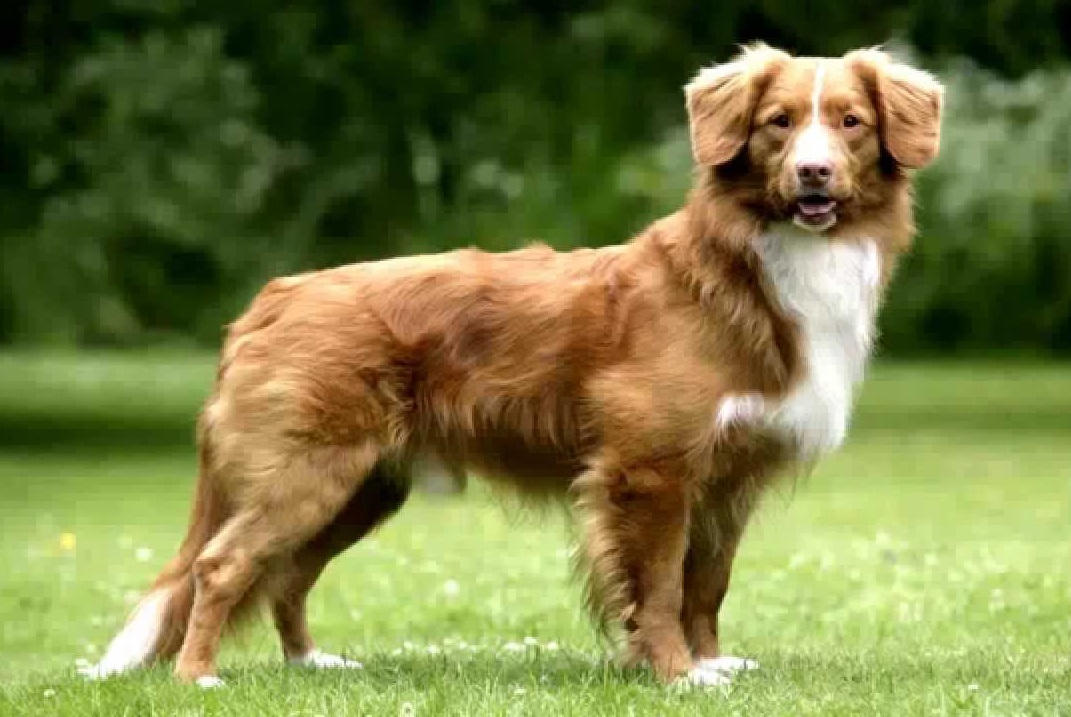
Nova Scotia Duck Tolling Retriever

Navigate through the tabs
Navigate through the tabs below to view the breed's info of your interest.
The breed's info is divided in four sections; namely:
the breed's history ,
the breed's main stats ,
the dog's potential health issues
and finally, how the breed scored in 26 different categories.
All the above information should give you a respectively good overview for the dog of your interest.
Dog Breed's Main Info
The Breed's History:
The breed was developed in the community of Little River Harbour in Yarmouth County, Nova Scotia, around the beginning of the 19th century to toll waterfowl and as an all purpose hunting dog. The breed was originally known as the Little River Duck Dog or the Yarmouth Toller.
Its exact origins are not known but it appears that some possibly spaniel and setter Pointer-type dogs, retriever-type dogs, and rabbit hounds. Farm collies also went into the mix as many became herding dogs as well as hunting dogs and family pets.
The Toller was officially admitted to the Canadian Kennel Club in 1945. Declared the provincial dog of Nova Scotia in 1995, the breed gained national recognition in 1980, when two Nova Scotia Duck Tolling Retrievers were awarded Best in Show at championship events that included many breeds.
On June 11, 2001, it was approved for admission into the Miscellaneous Class of the American Kennel Club and was granted full recognition into the Sporting Group on July 1, 2003.
Country of Origin:
Canada
Breed Group:
Sporting
Height:
1 foot, 5 inch. to 1 foot, 9 inch. (43,18 to 53,34 cm)
Weight:
35 to 50 pounds (15,87 to 22,68 Kg)
Life Span:
10 to 14 years
Potential Health Issues:
Collie Eye Anomaly,
Hip Dysplasia,
Deafness,
Progressive Retinal Atrophy (PRA)
Adaptability
Apartment Living:
First Time Owners:
Sensitivity:
Being Alone:
Cold Weather:
Hot Weather:
Friendliness
Affection With Family:
With Kids:
With Dogs:
With Strangers:
Health and Grooming
Shedding:
Drooling:
Easy To Groom:
Overall Health:
Weight Gain Potential:
Size:
Training
Easiness:
Intelligence:
Mouthiness:
Prey Drive:
Barking or Howling:
Wanderlust:
Need For Exercise
Energy Level:
Intensity:
Exercise Needs:
Playfulness:
Our Mobile Application
Check out Our Mobile Application "Dog Breeds Central"
